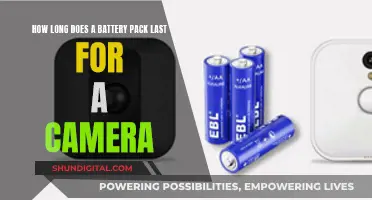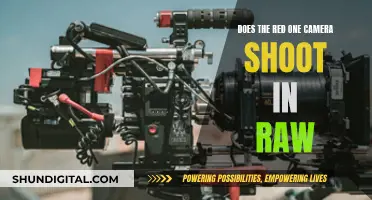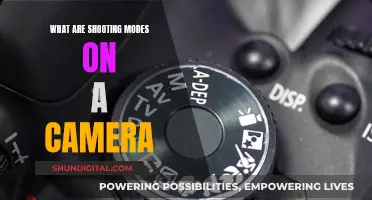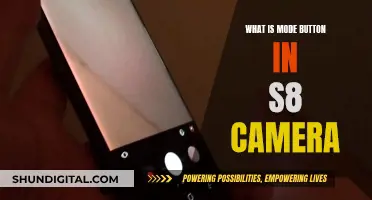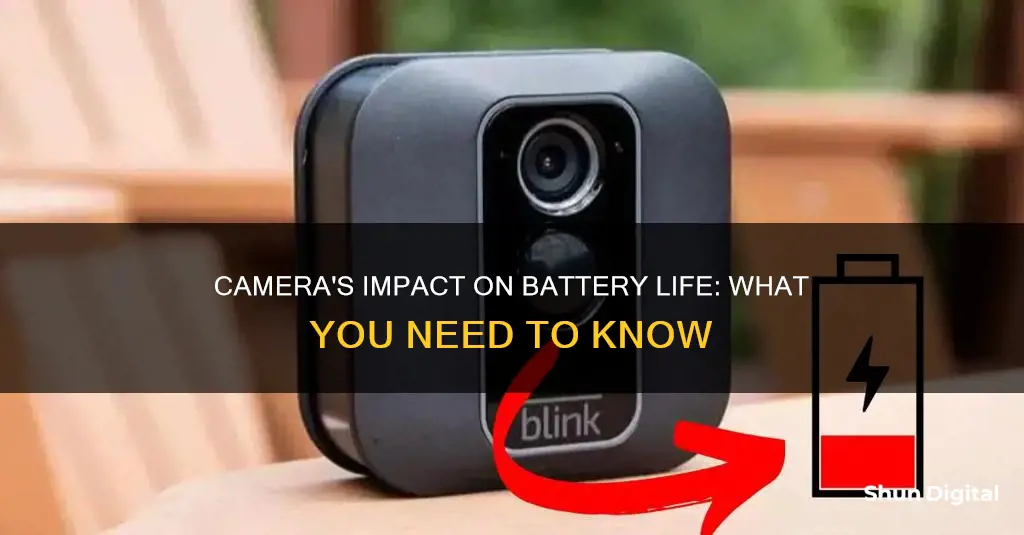
Cameras can drain batteries for a variety of reasons. One of the most common causes is the overuse of the LCD screen, which consumes a lot of power when used to preview and review photos. Other factors include using the flash too often, shooting in cold weather, and leaving the camera on for extended periods. Additionally, old or low-quality batteries, as well as faulty batteries or cameras, can also contribute to faster battery drain. To improve battery life, it is recommended to use rechargeable batteries, adjust camera settings, and turn off the camera when not in use.
| Characteristics | Values |
|---|---|
| Camera left on when not in use | High battery drain |
| Camera settings | Flash, high resolution, continuous shooting mode, Wi-Fi, GPS |
| Battery type | Low-quality, old, faulty, incorrect type |
| Camera features | LCD screen, continuous autofocus, automatic flash, zoom, power-saving mode |
| Camera usage | Scrolling through stored photos, cycling through menus, shooting in cold weather |
| Other factors | Software bugs, extreme temperatures |
What You'll Learn

Using the wrong type of batteries
If your camera uses AA batteries, it is recommended to use good-quality Ni-MH rechargeable batteries, as these will give you the best battery life. Rechargeable batteries tend to lose their ability to hold a full charge over time, so if your battery is a few years old, you may need to replace it.
It is also important to check for corrosion, especially if the battery has been stored in the camera for several weeks without use, as this can cause the battery to not charge properly. Additionally, scratches or smudges on the battery's metal contacts or the metal contacts inside the battery compartment can cause below-average battery performance.
Charging Your GE X600 Camera: A Quick Guide
You may want to see also

Using the flash too often
The flash is one of the two main components that use the highest amount of battery power in a standard digital camera. Therefore, using the flash too often will drain your camera's battery.
If you are using a flash that is mounted on your camera, it will likely be powered by the camera's own battery. This is the case for Canon 70D cameras, for example. However, some flashes have their own batteries, which will need to be replaced or recharged separately.
If you are using a flash with its own battery, it is important to invest in good-quality rechargeable batteries, as these will retain their charge over time. Conventional rechargeable batteries will drain when left unused, so you may find that they are flat even after a week. Look for batteries that retain their charge while not in use, such as Sanyo Enloop or other smart batteries. It is also worth investing in a quality recharging unit. Avoid fast chargers, as these can reduce battery performance over time. Instead, opt for a unit that allows you to set a slow charging speed, such as the Maha/Powerrex brand.
If you are using a flash that is powered by your camera's battery, there are still ways to conserve power. Avoid using the LCD screen to preview and review photos, as this uses a lot of battery power. Instead, use the viewfinder to frame your shots, and lower the brightness of the LCD screen. You can also disable post-shot reviews, which will reduce the amount of time you spend using the LCD screen.
By following these tips, you can help reduce battery drain when using your camera's flash.
Camera Batteries: Understanding the Power of LiPo Technology
You may want to see also

Continuous autofocus feature
The continuous autofocus feature is a handy tool for photographers, as it allows the camera to constantly adjust focus and ensure that moving subjects are always sharp and in focus. However, this feature comes at a cost, as it is known to be a significant drain on the camera's battery life. This is especially true for mirrorless cameras, which already tend to have shorter battery lives compared to DSLRs.
When the camera is in continuous autofocus mode, the autofocus motors and technology are constantly active and making adjustments, which requires a lot of power. This is in contrast to single autofocus mode, where the camera locks focus on a subject and does not need to make constant adjustments. As a result, single autofocus mode is more power-efficient and easier on the battery.
In addition to the constant power draw, another factor that contributes to battery drain in continuous autofocus mode is the increased processing power required. The camera's processor has to work harder to keep up with the constant adjustments being made by the autofocus system. This is especially noticeable in low-light conditions or when tracking fast-moving subjects, where the camera may struggle to maintain focus and end up constantly acquiring and losing focus.
It is worth noting that the impact of continuous autofocus on battery life can vary depending on the camera model and brand. Some cameras are more power-efficient than others, and some may have specific power-saving features that help mitigate the impact of continuous autofocus. Additionally, using certain lenses, such as heavier lenses, can also increase the power draw and further drain the battery.
To conserve battery life when using continuous autofocus, it is recommended to carry spare batteries and be mindful of other power-draining features such as the flash, LCD screen, and burst mode. Turning off features that are not necessary for the shoot can also help extend battery life. Additionally, some cameras offer a "'back button focus' option, which allows you to activate continuous autofocus only when a specific button is pressed, rather than having it constantly active. This can be a useful way to save power when shooting stationary subjects or when you don't need constant autofocus adjustments.
Charging Your PowerShot S110: A Step-by-Step Guide
You may want to see also

Using the LCD screen instead of the viewfinder
If you are using a DSLR camera, the LCD screen is powered by the battery, and the viewfinder is optical, meaning it does not require any power to operate. Therefore, using the LCD screen instead of the viewfinder on a DSLR will result in a significant difference in power consumption.
However, if you are using a mirrorless camera, the difference in power consumption between the LCD screen and the viewfinder is not as large, but it is still there. The LCD screen uses more energy than the viewfinder and will drain the battery quicker. This is because the viewfinder on a mirrorless camera is a mini display panel and does require power to operate.
To maximize your battery life, it is recommended to minimize the use of the LCD screen or set a time limit on playback or when the camera sleeps.
Charging Your SQ11 Camera: How Long Does It Take?
You may want to see also

Extreme temperatures
Lithium-ion batteries, commonly used in cameras, exhibit a remarkable decrease in capacity when used in below-freezing temperatures. The batteries may not hold their full charge if stored in cold locations. The extent of the effect depends on the camera, battery, and the actual temperature. The battery's effective capacity can be significantly reduced, and it may even stop working completely if it gets too cold.
To mitigate the impact of cold temperatures, photographers recommend bringing extra batteries and keeping them warm. This can be achieved by storing them in an inner pocket close to the body or in a fanny pack under outer layers. Keeping the batteries warm will help maintain their charge for a longer period. Additionally, recharging batteries inside a sleeping bag or near a heat source, such as a car heater, can be effective.
When returning indoors with cold camera gear, it is advisable to leave the equipment in its bag or case for a few hours until it has warmed up. Removing it too early in a warm room can cause condensation to form on the camera and lens surfaces.
High temperatures can also negatively impact lithium-ion batteries, leading to performance degradation and potential safety hazards. Therefore, it is crucial to avoid exposing camera batteries to extreme heat.
Charging Camera Batteries: International Travel Guide
You may want to see also
Frequently asked questions
There are several reasons why your camera battery may be draining quickly. This includes leaving the camera on for extended periods, not optimising settings for battery life (e.g. using flash and LCD screen too often), and using low-quality or old batteries.
To make your camera battery last longer, you can adjust your camera settings, such as turning off the flash and LCD screen when not in use, and using a viewfinder instead. You should also avoid using certain features like continuous autofocus, shooting in burst mode, and using the camera in cold weather. Additionally, using high-quality, rechargeable batteries designed for your camera can help improve battery life.
If your camera battery is not holding a charge, it may be a sign that it needs to be replaced. Other signs include corrosion on the battery terminals, deep scratches or smudges on the metal contacts, and the camera draining excessive current.


